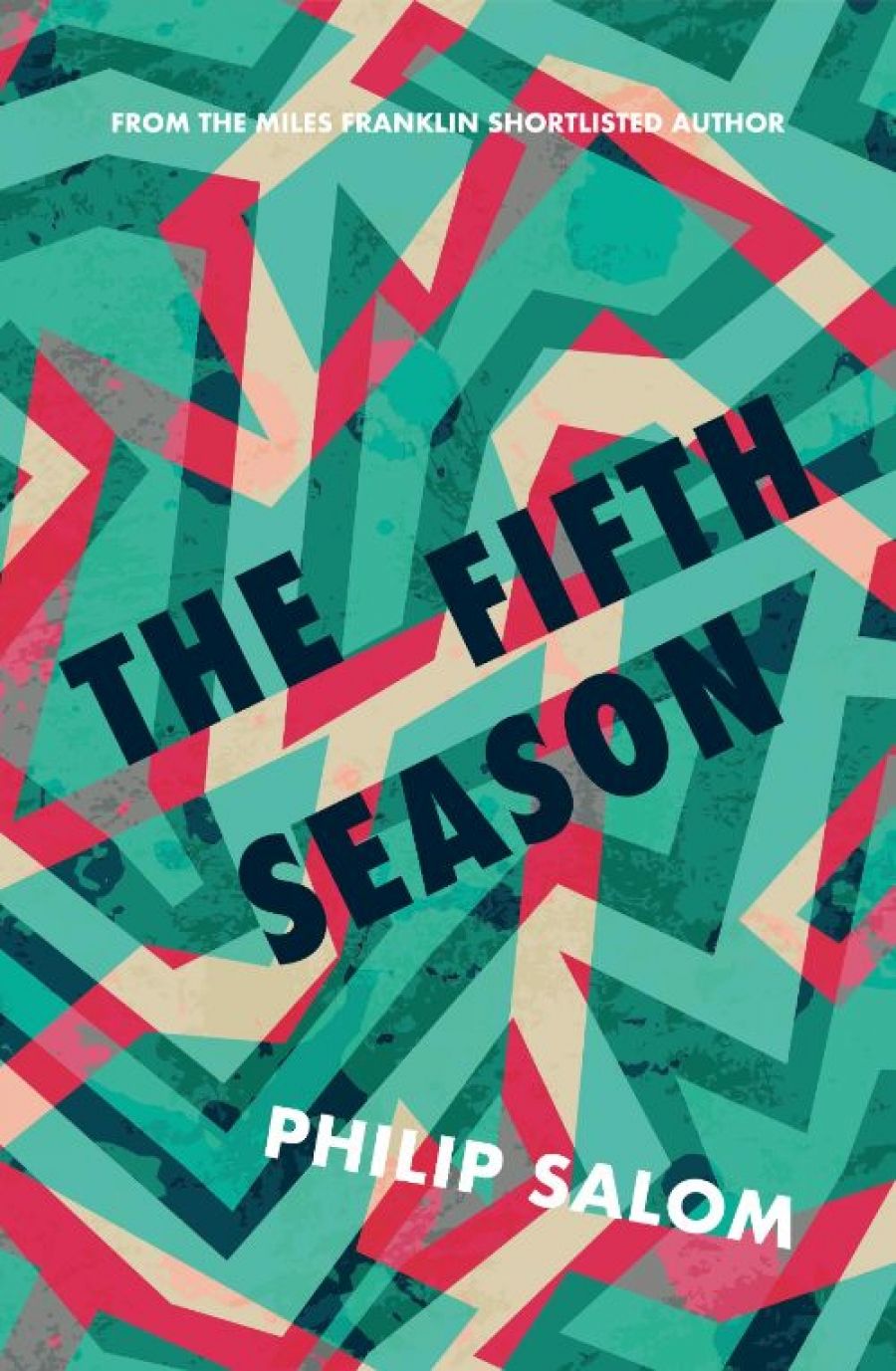
- Free Article: No
- Contents Category: Fiction
- Review Article: Yes
- Article Title: Other dimensions
- Article Subtitle: Bodies and time in Philip Salom’s fifth novel
- Online Only: No
- Custom Highlight Text:
In Western culture’s calendar year, is there some hidden fifth season, and if there is, what is it? The main character of Philip Salom’s fifth novel, a writer called Jack, asks himself near the end of the book whether the fifth season might be ‘Time, which holds the seasons together’, or perhaps the fifth season is simply ‘the Unknown’. Jack is preoccupied with the lost: with those people whose bodies are found but never identified, or those who, suffering amnesia, can’t be identified, but who need ‘to find their proper location in the story. In the seasons. A lost person must be allowed other dimensions.’
- Grid Image (300px * 250px):

- Book 1 Title: The Fifth Season
- Book 1 Biblio: Transit Lounge, $39.99 pb, 288 pp
- Book 1 Readings Link: booktopia.kh4ffx.net/LAx3V
We deduce from the outset that Jack’s own days are numbered, that he is suffering from a terminal illness and following a strict regime of drugs and diet. It takes him a while to find his feet in Blue Bay, rearranging the furniture both literally and figuratively, and trying to work out the personality and motivations of his landlady, Sarah, while gradually familiarising himself with the people of the town. Sarah, too, it turns out, is obsessed with the lost: since her sister Alice went missing, Sarah has taken to painting giant murals of her face in public spaces around the district, as well as mural portraits of other missing people, as a form of activism.
This is the realist framework of a novel that stretches beyond realism and well into the territory of metafiction. Both Sarah and a now-absent character called Simon, a former tenant, are characters from an earlier novel of Salom’s called Toccata and Rain (2004). There are novels within novels, visual representations of other representations, stylised recurrent motifs, and other wheels within wheels.
There is also a lot of ruminating about identity, presence, absence, and – understandably, as Jack’s physical condition deteriorates – death. Although there is a reasonable amount of action and dialogue in this novel, plot and character are not really Salom’s main concern here. It’s a novel of ideas in which the ideas are often floating in a kind of limbo, where it’s not immediately apparent who is speaking. Is it Jack, or is it the absent Simon, also a writer, or is it Salom himself? Samuel Beckett asked, ‘What does it matter who is speaking?’ In this novel, sometimes it doesn’t matter very much: what matters most is what is being said.
This is a novel that stretches beyond realism and well into the territory of metafiction
This novel reminds me of George Saunders’s Lincoln in the Bardo (2017) in its preoccupation with the liminal zone, richly diverse and unstable, between life and death. The beach setting is an obvious but satisfying metaphor for this, especially considering Jack’s poor prognosis: as time goes on, ‘the ocean is faster and closer in rhythm’. The death of Aschenbach on the beach in Thomas Mann’s Death in Venice haunts Jack as much as that of the Somerton Man and the others:
… while he, Jack, is entranced by the freeze-frame just after the point of death, what had been is more powerful in being implied. They died on a beach as factually as Aschenbach died on a beach in fiction … The rules of life are quite clear: life requires a body, and death requires a body, and a story joins them. Alice’s case is an aberration: there is no body and no death. She is neither alive nor dead.
There are a number of figures in this book who might be said to occupy a liminal space. There are the unidentified dead bodies of history, like those of the Somerton Man and the ‘Isdal Woman’, found dead in Norway in 1970, victim of either murder or suicide, and almost certainly an international spy. There are the fictional missing, like Alice, whose names are known but who could be either alive or dead. There are those who, also like Alice, are continually brought back to life in art: Sarah’s murals of her sister’s face are echoed in the activity of another character, Peter, who makes sculptures and carvings in different materials of the same person, his sister, over and over. And closest to home, there is the dying Jack: to be weathering a terminal illness is in itself a kind of liminal state, where death is known to be coming but has not yet arrived.
This novel will not be everyone’s cup of tea. Salom’s previous novel, The Returns (2019), was reader-friendly in a way this one is not, but the two books share some strong similarities. Both novels chart the genesis and gradual growth of an initially platonic relationship between a man and a woman who have both already been a little bashed around by life, and both novels explore a relationship between art and life that in The Fifth Season is more explicitly about the complexities of memorialisation. Salom plays some intricate games with these ideas, but, playfulness notwithstanding, we are not allowed to forget that John Donne was wrong: that death is, after all, mighty and dreadful.


Comments powered by CComment